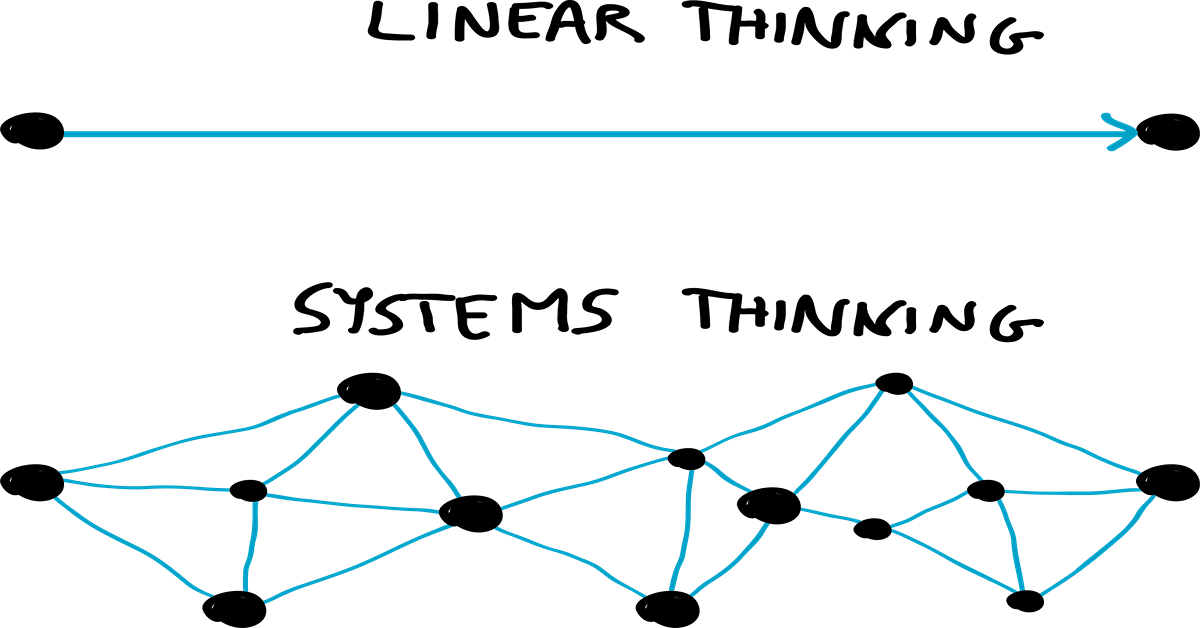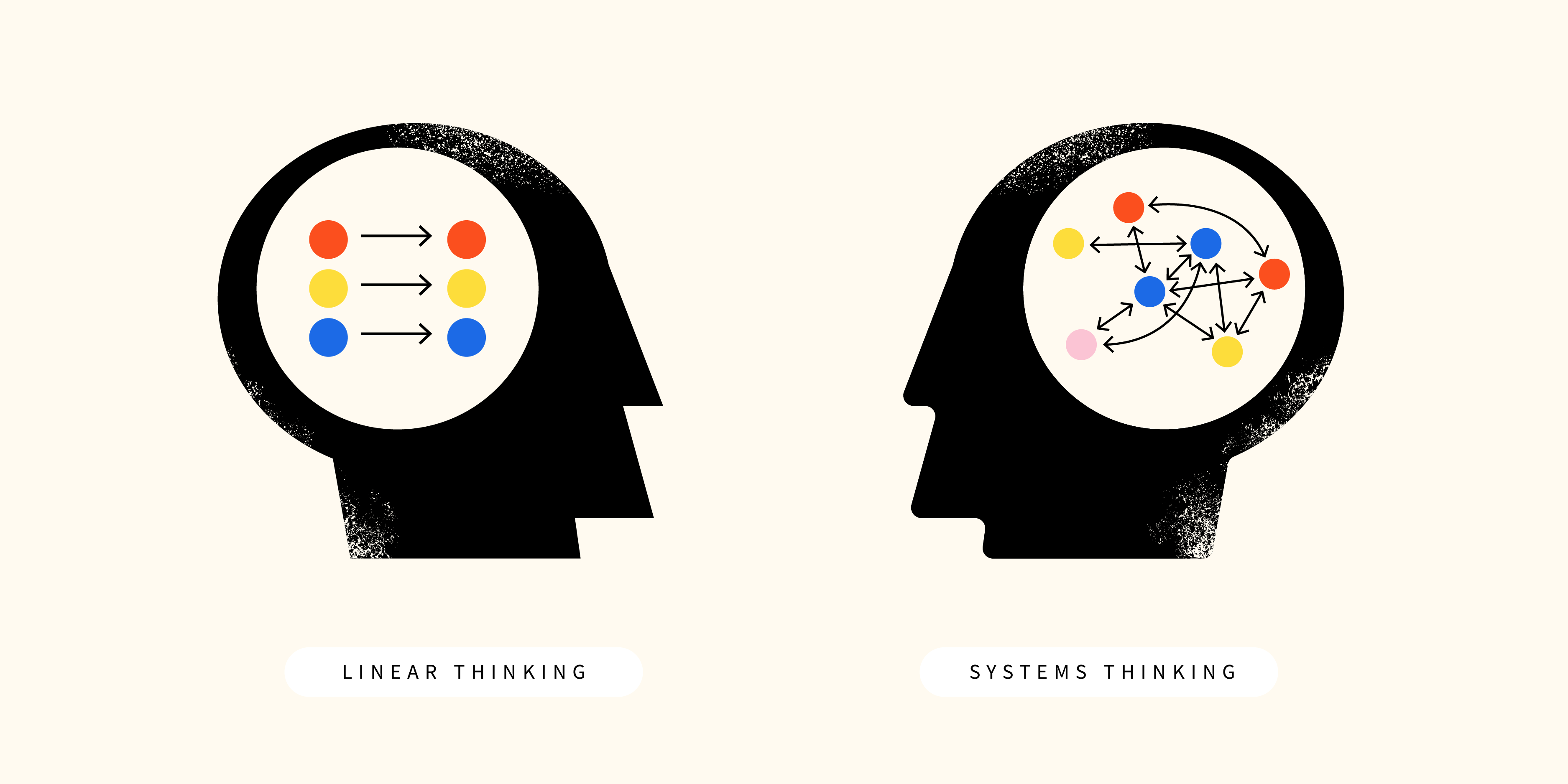
Linear thinking: Key success in anything
Linear thinking is a cognitive process that involves following a structured, sequential approach to problem-solving and decision-making. It’s characterized by its step-by-step progression, logical order, and predictability.

Key Characteristics of Linear Thinking:
- Sequential: Linear thinking moves from one step to the next in a logical order, ensuring that each step builds upon the previous one. This allows for a systematic and organized approach to problem-solving.
- Logical: It follows a logical sequence, ensuring that each step is justified and connected to the overall goal. This helps to avoid errors and ensure that the solution is valid.
- Predictable: The outcome of linear thinking can often be predicted based on the initial conditions and the steps taken. This makes it a reliable and consistent approach.
- Structured: Linear thinking adheres to a structured approach, such as a problem-solving process or a decision-making framework. This helps to ensure that all relevant factors are considered and that the solution is well-organized and easy to understand.
Applications of Linear Thinking:
- Mathematics: Linear thinking is essential for solving equations, proving theorems, and following algorithms. It involves breaking down complex problems into smaller, manageable steps and applying logical reasoning to arrive at a solution.
- Science: Scientists use linear thinking to conduct experiments, analyze data, and draw conclusions. This involves following a structured approach to research, ensuring that all variables are controlled and that the results are reliable.
- Engineering: Engineers use linear thinking to design structures, develop products, and follow blueprints. This involves following a step-by-step process to ensure that the design is safe, efficient, and functional.
- Problem-solving: Linear thinking is a valuable tool for problem-solving, as it helps to break down complex problems into smaller, more manageable steps. By following a logical sequence, it’s easier to identify the root cause of the problem and develop effective solutions.
Successful Cases of Applying Linear Thinking

This thinking has been instrumental in numerous fields, leading to significant achievements and advancements. Here are some notable examples:
Scientific Discoveries
- The Scientific Method: The scientific method, a cornerstone of scientific research, is a prime example of linear thinking. It involves a series of steps, including formulating a hypothesis, conducting experiments, analyzing data, and drawing conclusions. This structured approach has led to countless groundbreaking discoveries in fields such as physics, chemistry, and biology.
- Medical Research: Linear thinking is essential in medical research, from developing new drugs to understanding disease mechanisms. By following a systematic approach, researchers can identify potential treatments, test their effectiveness, and ensure safety and efficacy.
Engineering and Technology
- Product Development: The development of new products often involves a linear process, from ideation and design to prototyping, testing, and manufacturing. Linear thinking helps engineers and designers break down complex projects into manageable steps, ensuring that the final product meets the desired specifications.
- Software Development: In software development, linear thinking is used in the waterfall model, a traditional approach that involves sequential phases such as requirements gathering, design, coding, testing, and deployment. While the agile methodology has gained popularity in recent years, linear thinking remains valuable for certain types of projects.
Problem-Solving and Decision-Making
- Business Strategy: Many businesses use linear thinking to develop and implement their strategies. By breaking down complex challenges into smaller, more manageable steps, businesses can identify key priorities, allocate resources effectively, and measure progress.
- Legal Reasoning: Lawyers use linear thinking to analyze legal cases and develop arguments. They often follow a logical sequence, presenting evidence and applying relevant laws to support their claims.
Educational Applications of Linear thinking
- Curriculum Development: Educators use linear thinking to design and structure curricula, ensuring that learning objectives are aligned and that content is presented in a logical sequence.
- Teaching and Learning: Teachers often employ linear thinking in their instruction, presenting information in a step-by-step manner and guiding students through the learning process.
While linear thinking is a valuable tool in many contexts, it’s important to recognize that it may not always be sufficient. In some cases, creative and divergent thinking may be required to address complex problems or explore innovative solutions.
See also: Part-time Teachers for Public Schools
A Guide to Using Linear Thinking in Teaching

Linear thinking is a valuable tool for teachers to structure their lessons and guide students through the learning process. Here’s a guide to effectively incorporating linear thinking into your teaching:
1. Clear Learning Objectives
- Define clear goals: Before planning your lessons, establish specific and measurable learning objectives. This will help you structure your content in a logical sequence.
- Break down objectives: If your objectives are complex, break them down into smaller, more manageable sub-objectives. This will make it easier to design a step-by-step learning path.
2. Logical Sequencing
- Build on prior knowledge: Begin your lessons by reviewing and reinforcing students’ existing knowledge. This will provide a strong foundation for new concepts.
- Progress gradually: Introduce new information in small, digestible chunks. Avoid overwhelming students with too much information at once.
- Connect concepts: Clearly explain how new concepts relate to previously learned material. This will help students see the big picture and make connections between different ideas.
3. Structured Lesson Plans
- Create a clear outline: Develop a detailed lesson plan that outlines the sequence of activities and content. This will help you stay organized and ensure that your lessons flow smoothly.
- Use visuals: Incorporate visuals such as diagrams, charts, and graphs to illustrate concepts and make them easier to understand.
- Provide examples: Use real-world examples to illustrate abstract concepts and make them more relatable to students.
4. Guided Practice
- Provide opportunities for practice: After introducing new concepts, provide students with opportunities to practice applying their knowledge. This could involve completing worksheets, solving problems, or engaging in hands-on activities.
- Offer feedback: Provide timely and constructive feedback on students’ work. This will help them identify areas where they need improvement and make progress.
5. Review and Assessment
- Regularly review: Periodically review key concepts to reinforce learning and help students solidify their understanding.
- Use assessments: Employ a variety of assessments, such as quizzes, tests, and projects, to evaluate student learning and identify areas for improvement.
6. Flexibility and Adaptation
- Be adaptable: While linear thinking provides a structured approach, be prepared to adapt your lessons as needed. If students are struggling with a particular concept, you may need to provide additional support or revisit previous material.
- Consider different learning styles: Remember that students have diverse learning styles. While linear thinking may work well for some students, others may benefit from more flexible or creative approaches.
By following these guidelines, you can effectively structure your lessons, guide students through the learning process, and help them achieve their full potential.
Linear Thinking vs. System Thinking: A Comparison
| Feature | Linear Thinking | System Thinking |
|---|---|---|
| Focus | Individual components | Interconnectedness of components |
| Approach | Sequential | Holistic |
| Perspective | Reductionist | Emergent |
| Predictability | High | Low |
| Suitable for | Simple systems | Complex systems |
Example:
- Linear Thinking: If you’re trying to fix a car engine, you might follow a step-by-step troubleshooting guide, focusing on individual components and their functions.
- System Thinking: If you’re trying to understand the causes of climate change, you would need to consider the interconnectedness of various factors, such as greenhouse gas emissions, ocean currents, and atmospheric conditions.
